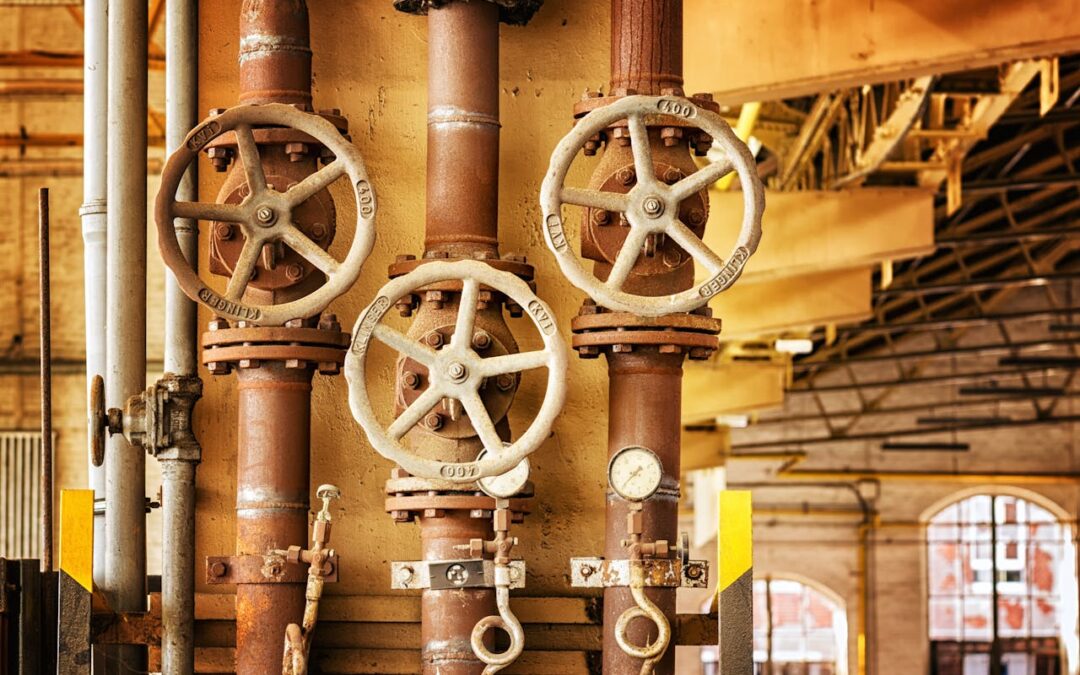Old pipes can be trouble for your home, often causing more problems than you might expect. As the years go by, pipes can weaken, leading to leaks and other issues that disrupt daily life. Ignoring these concerns could result in costly repairs and potential water damage.
Ensuring your plumbing is in top condition not only protects your property but also promotes a healthier living environment. Outdated pipes can harbor rust and build-up, affecting water quality and even posing health risks. Recognizing when pipes need replacement helps maintain the safety and efficiency of your home.
Investing in new pipes is not just about fixing leaks. It’s about enhancing your home’s value and cutting down on wasted water. By taking action now, you safeguard your property and contribute to a more sustainable future. Understanding why it’s critical to address old plumbing can lead to smarter home maintenance decisions for years to come.
Understanding the Risks of Old Pipes
Old pipes in a home can present a variety of risks that may cause both temporary and long-term issues. As pipes age, they become more susceptible to leaks, corrosion, and breaks. Materials used in older plumbing systems, such as galvanized steel or iron, tend to rust over time, leading to weakened spots that allow water to escape. Even minor leaks can spiral into major problems if left untreated, causing significant water damage to walls, floors, and foundations.
The deterioration of pipes isn’t just about leaks. Corroded pipes can contaminate your water supply, introducing rust particles and affecting water quality. This poses health risks, particularly if the water is consumed or used in food preparation. Furthermore, outdated plumbing may struggle to handle modern water usage, potentially leading to reduced efficiency and increased strain on the system.
The continuous threat of water damage from old pipes means more than just inconvenience. Structural damage can lead to costly repairs and significantly disrupt daily life. Addressing these risks is essential for maintaining a safe and healthy living environment, protecting both the integrity of the home and the wellbeing of its occupants.
Common Signs That Your Pipes Need Replacing
Recognizing when pipes need replacing can save you from unwanted surprises. Several signs indicate that your plumbing might be past its prime. Discolored water is a clear indicator, suggesting rust or sediment is present in the system. If your faucets produce brown or yellowish water, consider it a warning.
Low water pressure is another signal. If water struggles to flow strongly from taps and showers, it might point to blockages or narrowing pipes due to mineral buildup. Frequent clogs are telling as well, especially if multiple drains back up consistently; this could mean the main lines are compromised.
Unusual noises, like banging or humming, often suggest loose or unstable pipes. These sounds occur when water pressure causes pipes to move or vibrate against walls or other structures. Visible rust or corrosion on exposed pipes also implies deterioration and weak spots. Paying attention to these signs not only helps you address issues promptly but also ensures your plumbing system functions efficiently, avoiding unexpected breakdowns and repairs.
Financial and Environmental Benefits of Pipe Replacement
Replacing old pipes can seem like a big job, but the investment brings significant financial and environmental rewards. New pipes enhance water efficiency. With fewer leaks and improved flow, your plumbing system uses less water, which helps lower your water bills. Modern pipes also eliminate the issues caused by corrosion, reducing the need for frequent repairs and maintenance costs.
Environmentally, updating your plumbing conserves resources. Efficient pipes mean less wasted water, contributing to a sustainable use of natural resources. This is especially important in areas where water conservation is crucial. By reducing water waste, you help protect the environment for future generations.
Moreover, modern plumbing materials can increase your home’s value. Potential buyers are more confident in a property with updated systems, knowing they won’t face the hassles and expenses of outdated plumbing. Over time, the cost of pipe replacement is offset by savings on water bills and enhanced home value, making it a smart long-term investment for homeowners.
Steps to Take for Pipe Upgrades
If you’ve noticed signs that your pipes need attention, it’s time to plan an upgrade. Start by assessing the condition of your current plumbing. Look for visible leaks, rust, or areas where the pipes are exposed. Take note of any recurring issues, like low water pressure or unusual sounds.
Next, consult with a professional plumber to carry out a thorough inspection. They can offer insights into which pipes need replacing and recommend the best materials. Selecting high-quality materials is vital for a successful upgrade. Materials like PEX or copper lead to improved durability and performance, ensuring your plumbing lasts for many years.
Plan the replacement project carefully. Evaluate the timeline and budget to avoid any unexpected setbacks. Working with a professional ensures the job is done right, minimizing potential disruptions to your daily routine. Upgrading your pipes is a proactive step that protects your home and enhances your overall quality of life.
Conclusion
Keeping your home’s plumbing system in top shape is crucial for safety and comfort. Aging pipes pose risks that affect both your wallet and well-being. By staying aware of the signs that your pipes need replacement, you protect your home from water damage and other hazards. The benefits of replacing old pipes extend beyond immediate fixes, offering long-term advantages such as reduced bills and increased property value.
If you’ve spotted issues with your plumbing, don’t wait for problems to escalate. Contact H.C. Edwards Plumbing today to schedule an inspection or consultation with a professional plumber. Our experienced team is ready to help you assess and upgrade your plumbing system, ensuring your home remains safe and efficient for years to come.

